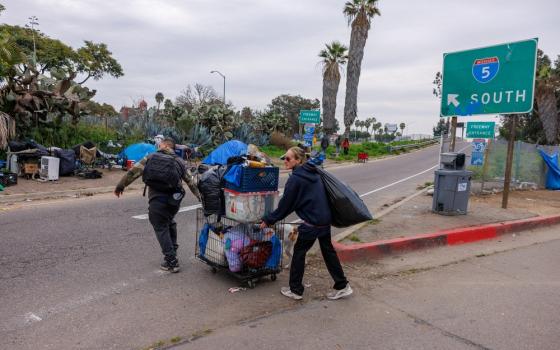
Mission Management
Parishioners love to give their opinions to their pastor -- whether he asks for them or not. Yet, how many times have we been directed at Mass to locate the stubby No. 2 pencils and scraps of paper and fill out a brief questionnaire? Too many times.
Isn’t there a better way to gather the opinions of parishioners to understand the parish community, its needs and aspirations? Yes. It’s called professional polling. And it helps when there is a first-rate polling institute a mile away.
Fr. Michael Farano, a seasoned pastor of St. Pius X Parish in Loudonville, N.Y., a suburb of Albany, with the support of the parish council, asked neighboring Siena College Research Institute to conduct a poll during spring 2008. “While most parishioners seem happy with the parish, we wanted to reach out to those who are not active in the parish,” said Farano.
St. Pius is a middle- to upper-class suburban parish with an elementary school serving almost 800 students, along with some 500 K-8 students attending religious education classes on Sunday morning. It has a substantial sports program and benefits from Franciscan priests from the college serving on weekends. St. Pius also supports two sister parishes in rural Georgia.
When Farano contacted Dr. Don Levy, director of the Siena Research Institute, the pastor insisted on paying the standard fee for this service. The institute charged $8,000, but this amount is considered “family pricing because of the long and close relationship between the parish and the college,” said Frank Pugliano, the then parish council president.
In advance of the survey, parish focus groups were convened without staff or priests involved. “They were asked to identify topics and issues for the survey,” said Pugliano.
Levy would then develop a specific survey question.
“I’ve never heard of an individual parish using professional polling as a way to understand better its parishioners,” Levy said. He was impressed by the parish leadership. “At St. Pius there is tremendous openness by the priests and lay leadership for dialogue,” he said.
Besides focus groups, the four-month survey process involved meetings of the survey committee, development and distribution of a questionnaire to all parishioners, multiple follow-up telephone calls to the parishioners and evaluation of the responses.
More than 1,200 parishioners from 1,106 households responded to the survey, whose purpose was “to understand parishioner attitudes and opinions towards the parish in general ... and to assist in fueling parish growth and development,” according to the 39-page final report.
“One thing that surprised me was the 51 percent response rate, which is well above most response rates for surveys,” said Pugliano. “Over 600 people took time to provide additional written comments,” he said. “We did the right thing to use professionals for the survey, as it provided objectivity and appropriate distance necessary to do a good job,” said Pugliano.
In September 2008, Levy presented the survey results at a town hall meeting.
So what did the survey reveal?
A surprise to Levy was that “some parishioners had the impression that the parish was made up of half ‘traditionalists’ and half ‘progressives’ and that simply is not the case.”
Most parishioners fall into three groups: traditionalists or conservatives (18 percent), progressive (24 percent) and middles or moderates (58 percent.) Most are happy with the parish (93 percent). Nearly six out of 10 (57 percent) have volunteered and currently one-third (32 percent) formally serve the parish.
Survey questions can also create some confusion, as was the case with a question about the role of the choir at Mass. One-third viewed the choir as the central focus of the Mass. Some 63 percent believe the parish itself sees the choir as more central to Mass than they personally believe it should be.
“Different people interpreted the question differently, even members of the choir,” said Farano. The question may have been ambiguous, he said.
Parishioners have different views of the Mass. Most parishioners (72 percent) say that the Mass is a sacred ceremony, yet not all parishioners seek the same experience.
Seventeen percent attend Mass to worship privately while 11 percent attend Mass to be a part of the parish community. By more than 2-1 margin (53 percent to 22 percent) parishioners agree that the “Mass is at the core of our faith” and it does not need any new embellishment. Meanwhile, 73 percent say that “making it [the Mass] more interesting and engaging is appropriate,” the survey said.
Going forward, the top three areas where parishioners want to do more are alleviating poverty (43 percent), discussion of issues with priests (42 percent) and meeting with the Franciscan priests (36 percent).
What’s next for the parish?
Pugliano said, “Five different parish committees have been asked to develop concrete plans that address specific sections of the survey.” The individual plans will be submitted to the parish council this coming August.
How has the survey affected parish life?
“It is important for each of the vocal minority groups -- the ‘traditionalists’ and ‘progressives’ -- to begin to talk to one another, to learn from one another,” said Levy.
One of the most important aspects of the survey was the dialogue it created within the parish. “Just the discussion it sparked made it worthwhile,” said Farano.
“I’d do it again in a minute,” he said.
Tom Gallagher is a regular contributor to NCR. Ideas for a “Mission Management” story? Contact him at tom@tomgallagheronline.com.




